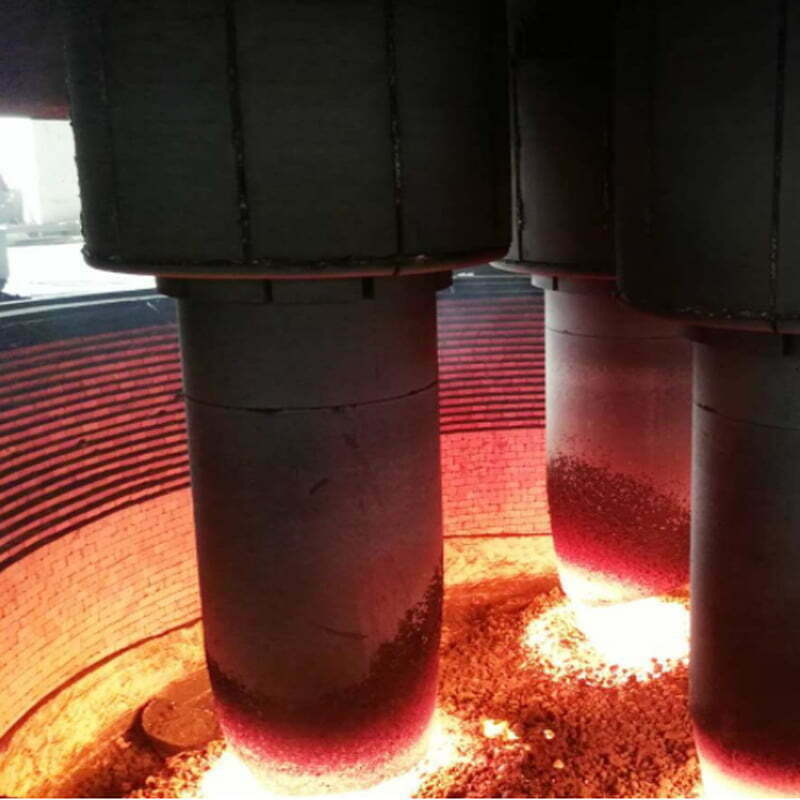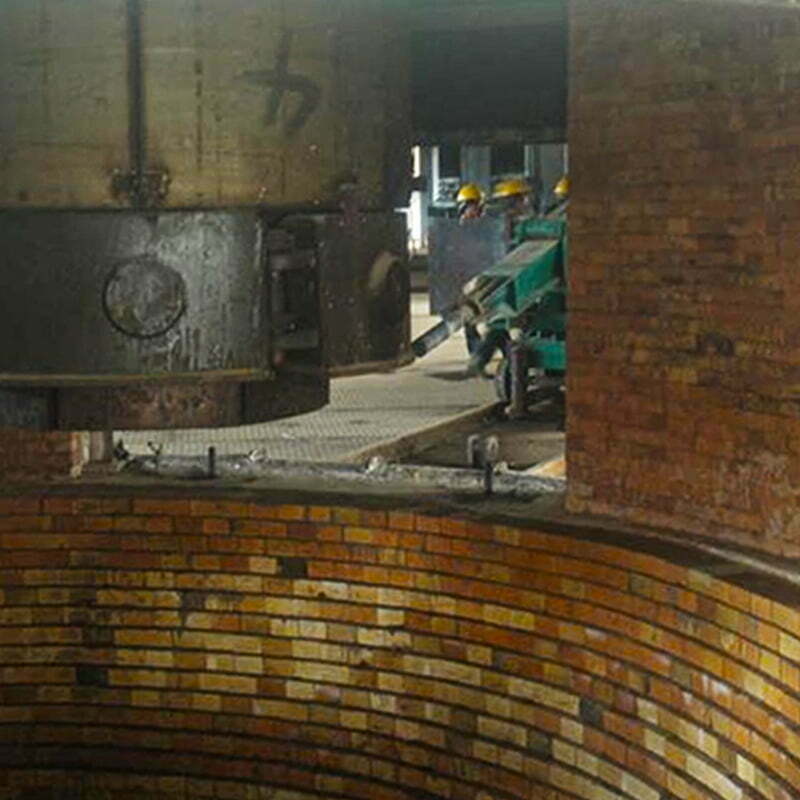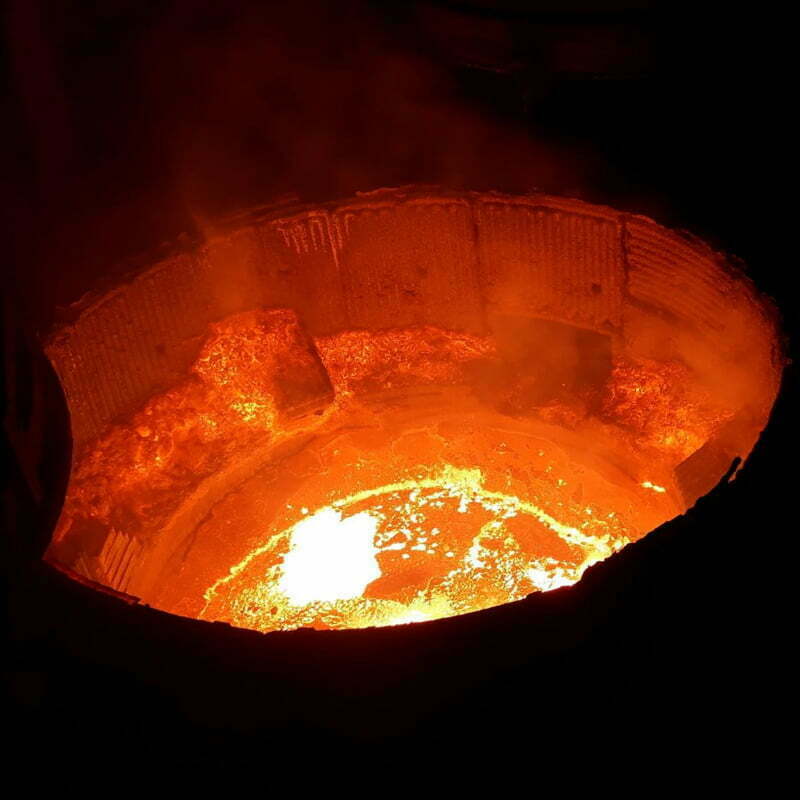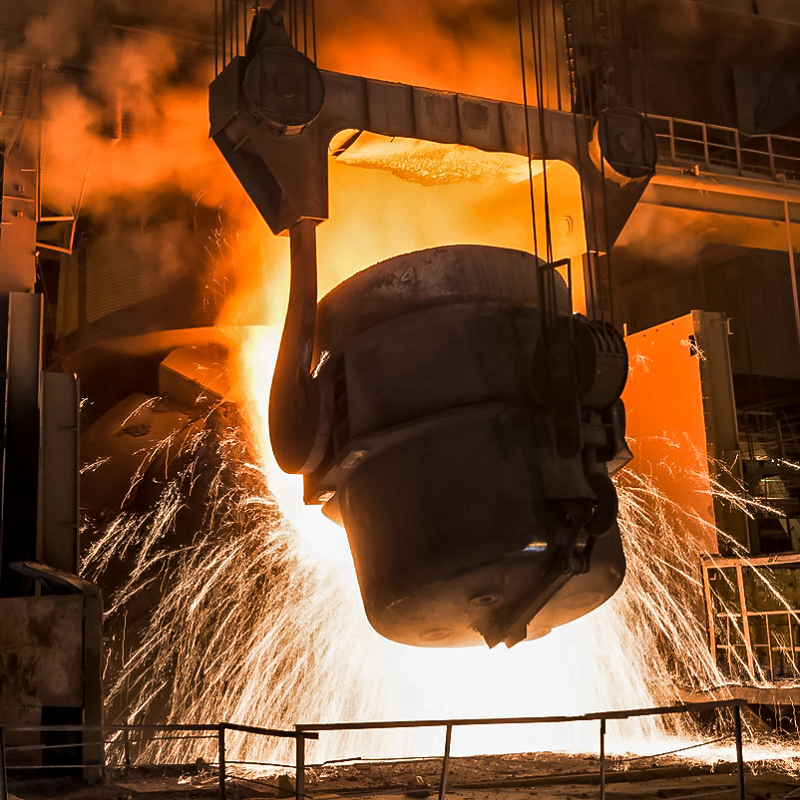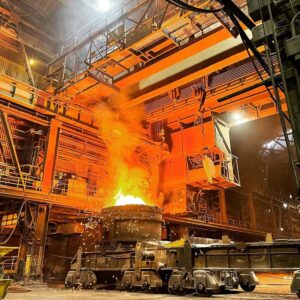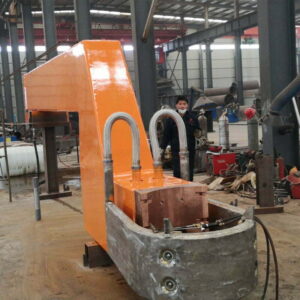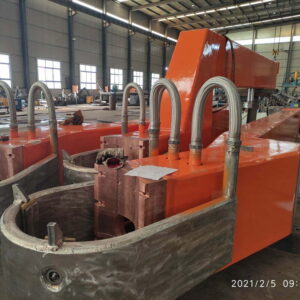Description
SAF lining of submerged electric furnace: There are two types of cooling method and heat preservation method.
The following are the specific advantages of the cooling method.
Most submerged electric furnaces with carbonaceous materials as the working layer widely adopt the lining structure of the heat preservation method.
Because the submerged arc furnace is subjected to mechanical erosion and chemical erosion by the slag and product liquid at high temperature, no matter what kind of high-quality refractory material is used, the damage of the furnace lining is inevitable.
The development trend of modern submerged arc furnace is to increase the smelting intensity of the reaction zone.
The working conditions of many furnace lining structures have approached or even exceeded the acceptable performance range of refractory materials, and pure material improvement has been unable to meet the requirements of smelting process development.
In recent years, HANI Metallurgy’s research on submerged arc furnace lining technology not only pursues the improvement of material but also adopts forced cooling measures combined with the structure of electric furnace to prolong the life of the furnace lining.
Structure of SAF Lining Cooling Method
For more than ten years, the forced cooling technology of submerged arc furnace lining has been widely used, and a new concept of lining has emerged, the so-called “condensing lining”.
The application of the forced cooling technology of the submerged arc furnace reduces the damage of the smelting process to the performance of the furnace lining refractory material, and greatly improves the productivity and economic efficiency.
Basic Principle
High thermal conductivity refractory material and furnace wall water cooling are adopted, and the SAF lining is cooled to be lower than the melting point of its own material by transferring the heat of the furnace lining.
This produces a condensed layer of slag, forming a protective slag shell;
This slag shell is wrapped on the high temperature surface of the refractory material, which isolates the refractory material from the high temperature, reduces heat loss, protects the lining, and prolongs the life of the lining.
The practice of this technology has proved that improving the thermal conductivity of the furnace lining material is an effective measure to prolong the life of the furnace lining.
The slag line is the weakest link of the furnace lining.
After the furnace shell adopts forced cooling measures such as water spray, it can effectively protect the slag line part of the SAF lining.
The specific measures are to build a layer of graphite bricks with high thermal conductivity closely to the furnace shell around the furnace wall;
When the external cooling intensity of the furnace shell is large enough, the heat flux transferred from the high temperature zone of the furnace to the furnace wall-slag interface is equal to or less than the heat flux transferred from the furnace shell.
The slag solidifies at the interface to form a natural lining (false lining).
Ventilation of the furnace bottom is a very effective measure to maintain the safe operation of the furnace bottom. Some electric furnaces use water-cooled furnace bottoms.
The furnace mouth area is also the weak point of the life of the submerged arc furnace.
HANI Metallurgy promotes the use of integrally drilled furnace bricks, and inlays graphite bricks with high thermal conductivity, erosion resistance and thermal shock resistance in the tapping area, which greatly improves the service life of the furnace bricks.
And this technology has been successfully promoted in many electric furnaces such as 6.3 MVA, 1.8 MVA and 30 MVA at home and abroad.
Electric furnaces such as high-carbon ferromanganese, high-carbon ferrochromium, manganese-silicon alloys produced by the slag process, and silicon-chromium alloys produced by the “one-step” process are all suitable for forced cooling lining structures.
SAF Type & Service
HANI Metallurgy is a SAF China manufacturer with rich experience in production and export.
We can design and manufacture furnaces with the appropriate power according to the specific needs of our customers.
Types of Furnaces
SAF is mainly used for reduction of raw materials such as smelting ores, carbonaceous reducing agents and solvents.
It mainly produces ferrosilicon, ferromanganese, ferrochrome, ferrotungsten, silicomanganese alloy and other ferroalloys.
The following models are in high demand by users
16500KVA industrial silicon, 12500KVA silicon-aluminum furnace, 16500KVA silicomanganese furnace, 16500KVA ferro-nickel furnace, 33000KVA ferrosilicon furnace, 33000KVA ferrosilicon furnace, 25500KVA ferrochrome furnace, 8000KVA industrial silicon furnace
and other customized furnaces according to customer requirements.
Services
HANI Metallurgy can provide “turnkey” services for technical solutions, production line design, plant layout, equipment manufacturing, installation and commissioning of relevant projects.
We can also design, manufacture, modify and upgrade your existing production equipment according to your requirements.
We will send our engineers to your factory to install and commission the machines and provide reliable after-sales service.
Our machines are easy to operate and maintain.
Production capacity can be adjusted according to customer requirements.
We supply complete plants as well as individual plants such as furnace shells, furnace covers, furnace liners, short grids, water cooling systems, fume extraction systems, dust removal systems, electrode shells, electrode press and lift systems, loading and unloading systems, grippers, burn-throughs, hydraulic systems, transformers for mineral-heating furnaces and various auxiliary equipment and accessories.

